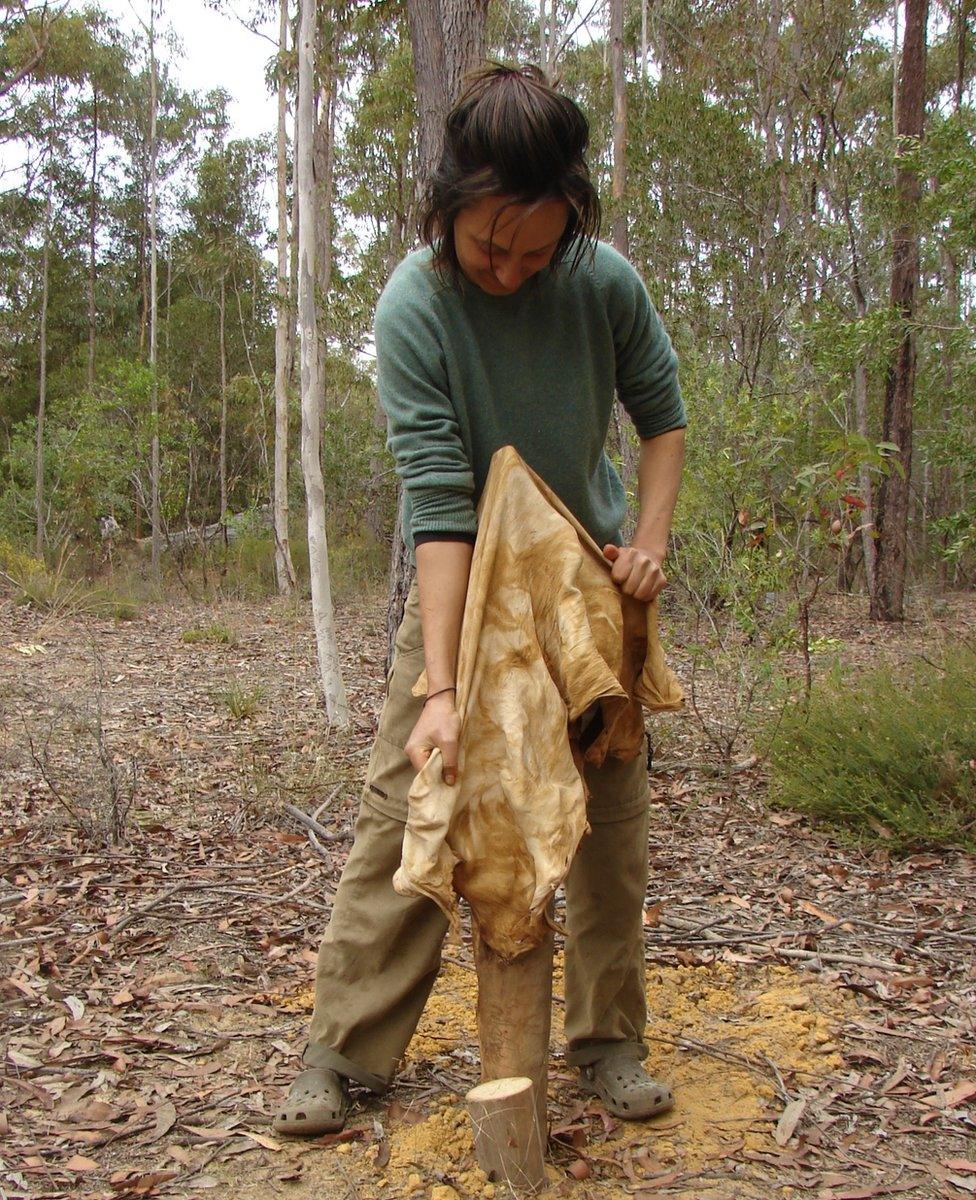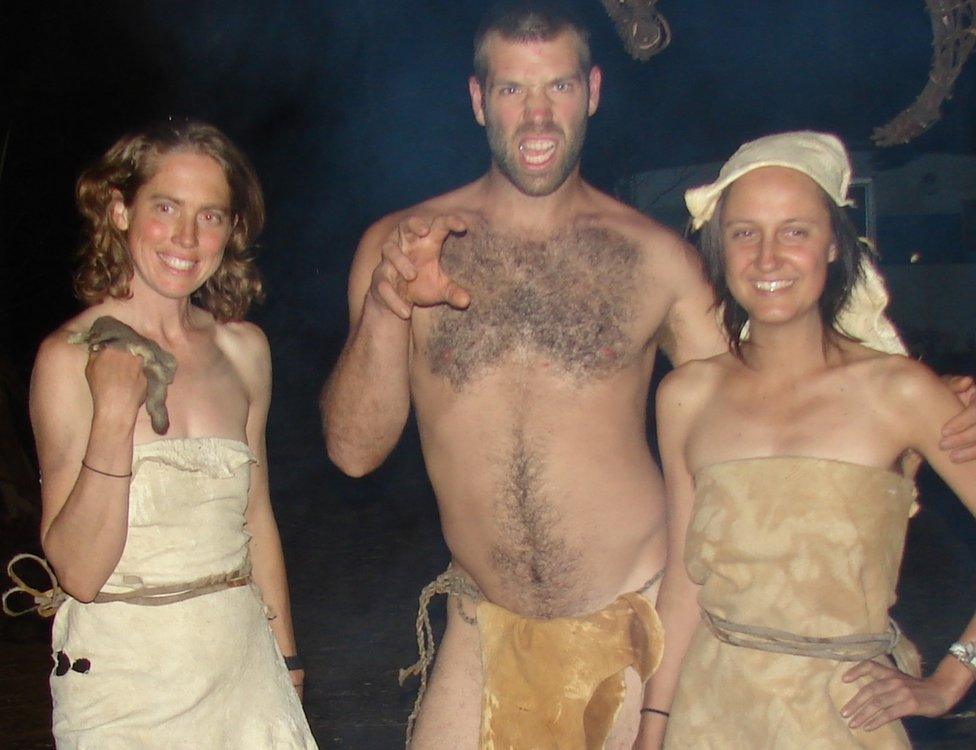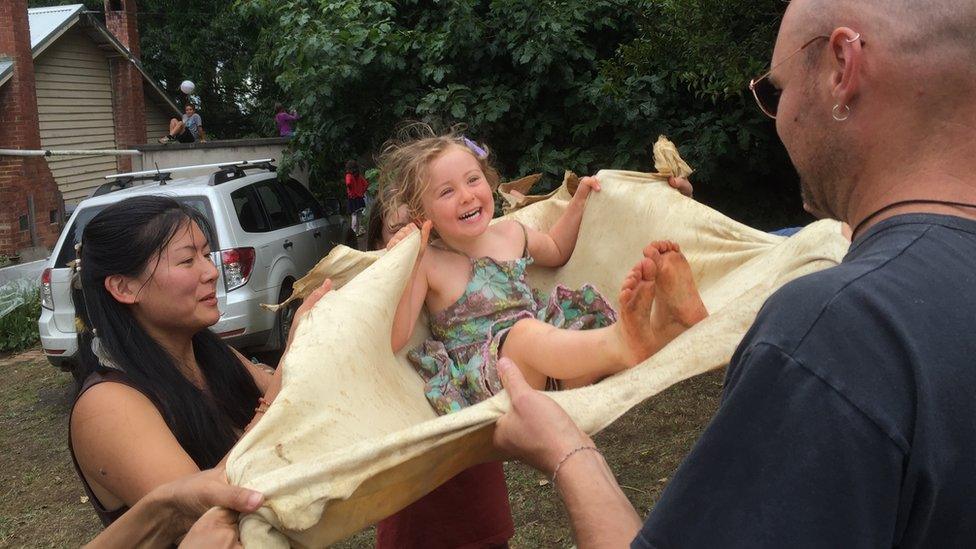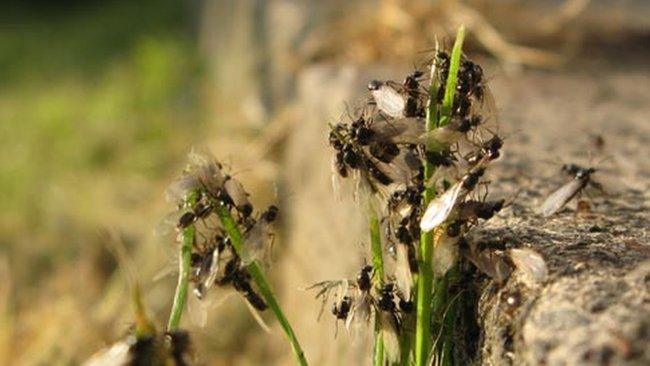Brain tanning and the alchemy of road kill
- Published

A kangaroo skin is cleaned on a fleshing beam as part of the brain tanning process
Author and "earth skills" expert Claire Dunn explains why she scooped a kangaroo carcass off the road for the sake of fashion.
On the Australia Day long weekend, I did something more traditionally Aussie than snags [sausages] on the barbie or sunburn on the beach. I tanned a kangaroo hide.
It was only after I had mentioned it casually to a friend on Facebook who replied "Ba ha ha - what a message!" that I remembered hide tanning was not your usual backyard hobby.
Nor was it mine, until 2010 when I embarked on a year-long Independent Wilderness Studies Program, living off the land in a forest on the north coast of New South Wales.
The experience quickly dispelled any romantic notions of wild living. I remember one night, my palms bleeding from fire-lighting blisters, standing under a shelter with rain pouring in and wondering what I was doing.
But overall I loved it. The rawness and physicality of living outdoors, the intimacy with the elements, and the time to just wander without time or destination.
Alongside a curriculum of matchless fire-making, shelter building, hunting and gathering, primitive pottery and bird language, I learned the art of "brain tanning".
'Ick factor'
Every animal, so I'm told, has enough brains to tan its own hide, the fats and chemicals contained within being the alchemical ingredient to turn skin into suede.
I still struggle to imagine by what experimental process this equation was first discovered, but the proof is smooth against my own skin on the occasions I don my matching hide skirt, top and bag.

Claire Dunn works a kangaroo hide on Australia Day
On Australia Day, it's been a year or so since my last tanning effort, and I'm a little daunted as I rescue my 'roo hide from the lime bath it has been soaking in and fling it onto the fleshing beam which is used to scrape off flesh and skin.
With the hair half falling out, it's hard to connect the object in front of me to the animal I scooped off the side of a road in far north Queensland last winter.
During the "bush year", roadkill roo provided me with a regular source of food, as well as leather. I didn't eat this one but salted and dried the hide for safe keeping.
My tanning companion is Michelle Yang, who is working on a deer hide from a nearby venison farm. She emerges from the kitchen with a bucket of what appears to be strawberry milkshake. Submerging her hands and the hide within it, Michelle looks up at me with a grin.
"I'm fine with the ick factor now, but the first time I saw brains being mushed up for tanning I almost upchucked," she says.
My shoulders soon remember the arduous process of turning stinky skin into leather. Into the night I lean my weight against the beam, and painstakingly scrape off layers of snotty epidermis until the matrix of small fibres underneath appear, each patch as unique as a fingerprint.

Claire Dunn (right) and friends dressed in clothing made from tanned hide
Looking closer I'm struck again by how incredible skin really is - thin, flexible, water wicking and so strong.
Michelle is several steps ahead of me, working the deer's skin with practiced fingers. She turned her suburban Melbourne backyard into a traditional tannery after learning the skill during a visit to the US. She works with rabbits too.
It's a passion that's turned into a business. Michelle ran her first Backyard Buckskin course this year.
"I just love the craft of it, the re-learning of what used to be such a part of indigenous life," she says.
"I also love that I'm making use of something that would be otherwise thrown out, and turning it into beautiful, durable clothing that I can also throw in the washing machine."
'Cherishing life'

Tanner Michelle Yang (left) says she loves making use of material that would otherwise go to waste
Michelle is not the only hide-tanner of my acquaintance. She's part of a loose east coast collective who gather occasionally to practise these and other "earth" skills.
Among them is Dan White, a life coach from northern NSW who picks up carcasses of wallabies near his home to feed both his dogs and his penchant for hides.
"If anyone took a look in the back of my van and saw plastic bags, knives, and rope they might be a bit worried," Dan says.
With a house adorned with "chicken bits, possum handbags, roo hides, wings and bones", Dan seems to loves the shock value it provides his guests.
"People think I'm a fruit loop, but then when I explain to them why I do it they get it," he says.
"Rather than about death I'm cherishing the life of these animals, it makes me feel closer to them. What's not normal to me is buying meat wrapped in plastic at the shop."
I feel that same sense of closeness to the roo on Australia Day, although the holes I'm accidentally scraping are making it look more like Swiss cheese than a potential pair of shoes.
My hide emerges from the brain bath like a cross between chamois, modelling clay and a rubber mat. Rain dampens our plans to soften and smoke the hides (another long and tiring process), so I return mine to the freezer until a later date.
Perhaps I'll make it an Australia Day ritual, an honouring of a lost art that also honours the lives of our wildlife.
Claire Dunn is a writer, rewilding facilitator and barefoot explorer. She is the author of My Year Without Matches: Escaping the City in Search of the Wild.
- Published19 July 2013
